In Love With the Frozen Moment: Meet Tonka Lokas From Šibenik
May 28, 2021 - Sometimes, the best way to learn, discover or connect with a Croatian city is through photography. And not just with drones, but also from a more humane and honest point of view. A great example is through the eyes and lens of Tonka Lokas, a talented and promising 23-year-old photographer from Šibenik.
Sometimes I wish I could brag about a past where, as a child, I discovered through a game or a hobby something that would eventually develop into a passion or professional interest. This is the case of many painters who began by scribbling on the walls, singers who won first places in school competitions, or novelists who wrote letters to their college sweethearts. But that wasn’t my case.
In an unsafe city, I grew up within four walls for protection. Don't get me wrong, all my childhood memories were fond and I constantly look back to make sure of it. How? Surely the box full of photographs that are at my parent’s house plays an important role there. Photography, in general. But you will see later that I am not the best one to explain why.
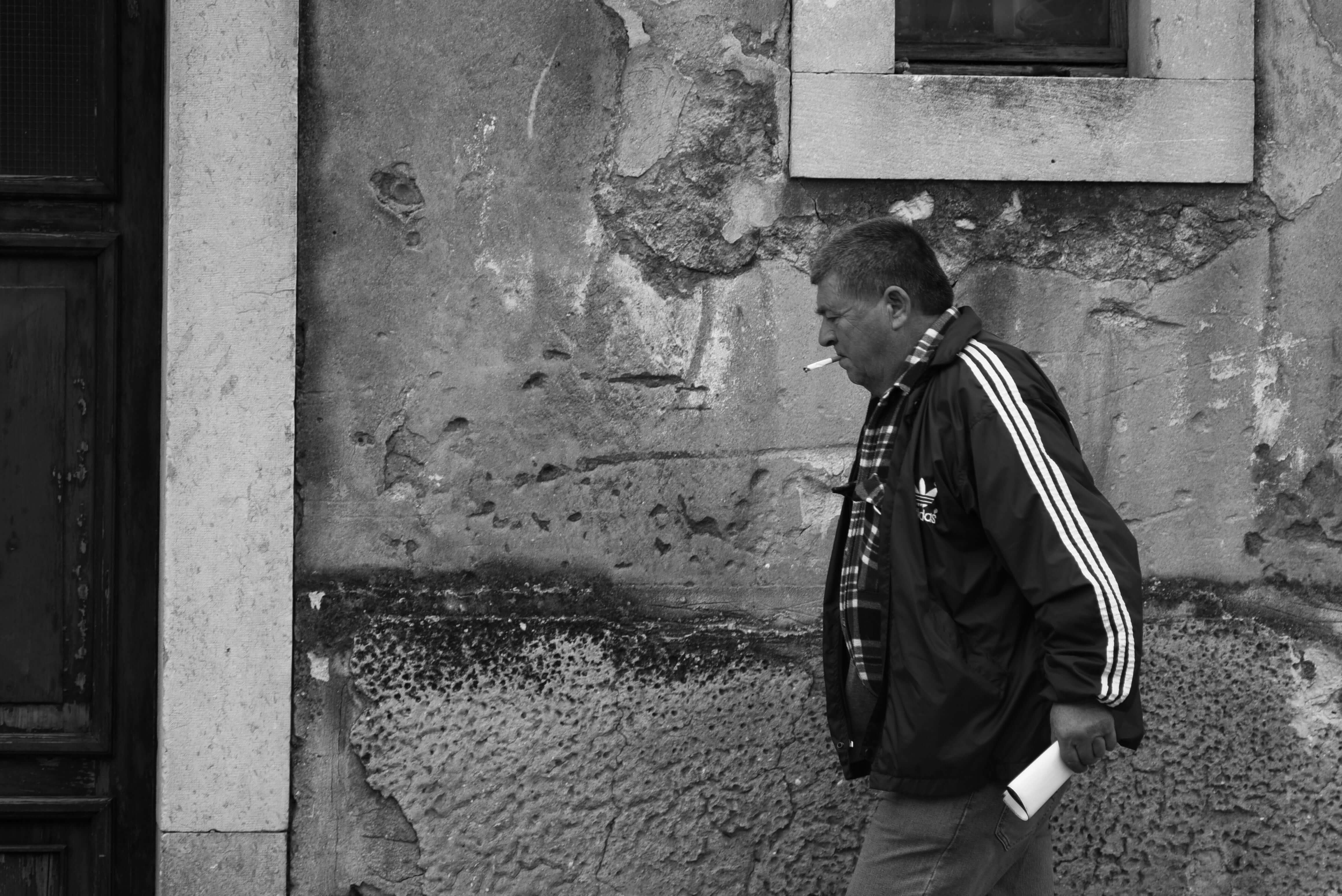
I say this because I believe that being in contact, from a very young age, with everything that surrounds you and moves, is stimulating. See how people interact in the street, how the other children play in the park, listen to what a couple of old men are talking on a bench, wander through the market stands on a Sunday morning... a lot to deconstruct in our little heads. But again, that wasn’t my case.
I’ve been living in Croatia for less than two years, and photography has helped me connect with a country that I am still trying to decipher and get to know better. And like me, every day I saw dozens of tourists or foreign students walking through the streets of Rijeka, Split, and Zagreb with a camera under their arms, capturing moments, people, expressions, scenes... it helps us to interpret what is around us, and later it facilitates the communication process with those we love.

But I also thought that it would be incredible to be able to learn more about a country or a city through the eyes of a person who grew up next to that place. And that’s the story of Tonka Lokas, from Šibenik.
A few months ago, I decided to share my photos on my Instagram account. I did not generate the impact that I expected, but I felt curious about learning more from the people who started following me. Especially those based in Croatia, hoping that through their pictures I could learn more about this country and maybe find some inspiration. And that’s how I discovered Tonka Lokas, a 23-year-old nurse, born and raised in the historical Dalmatian city of Šibenik, and her unique way of observing her city through a lens.

Tonka Lokas, from Šibenik
I immediately felt captivated with her photographs, since it is exactly the perspective with which I like to observe what happens in the street every day. It is true that on many occasions we involuntarily criticize everything that doesn’t suit our artistic preferences, but I think that as far as sitting and reflecting if a photograph is good or not, I prefer to think that each one of them serves a purpose. Even if that purpose is to get more likes.
And it is that, in recent years, most of the photographs that I see about Croatia are those taken from the point of view of a bird with a drone. And that’s fine! But it’s just one way to see it. I felt, honestly, that people were ignored. And this is not just in Croatia, but I believe it’s happening all around the world. Tourism? Sure. That’s the purpose, of course. There's so much to enjoy and discover through our own eyesight. Let’s never forget about the richness of the human factor within the culture. In this particular case, I saw a purpose to tell certain stories that we tend to ignore or pay no attention to when we walk from one place to another in our town or city.
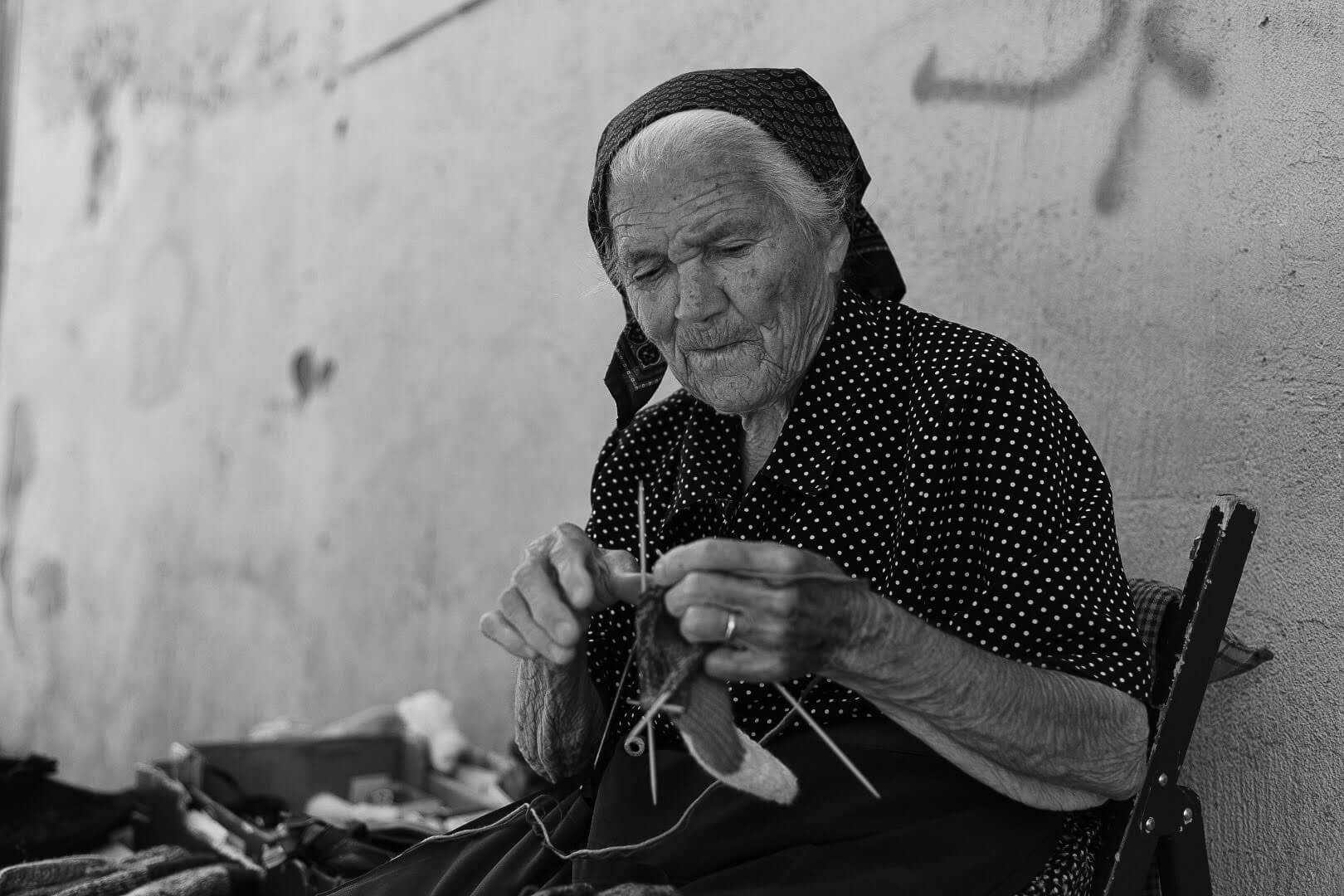
I was pleased to meet a different set of eyes. Ones that observed humanity, emotions, stories, relationships… Almost as if the photographs were taken with them, with each blink. A personal observation through the ancient streets of Šibenik, those that Tonka has been walking since she was very little and that now she photographs with her camera. It seemed to me like an incredible opportunity to learn more about her amazing life story and the city of Šibenik through her words, but especially, through her lens.

Tonka lives in a little apartment with her boyfriend Božo, their baby girl named Marica, and many, many cacti, which in fact she loves a lot. I was surprised to learn that Tonka did not study or is currently studying photography, as I had initially thought. Instead, she graduated from medical school, majoring as a nurse. However, photography has indeed been part of her life as she grew up.
What memories do you have from your childhood? Is there any connection between it and your photography? Are they any photographers in your family?
My childhood was filled with games and fun, especially because of the international children’s festival that takes place in my city every year. I discovered photography while attending one of the festival's workshops. My family had a little digital Sony camera and I always played with it. That workshop helped me to learn how to use the camera properly, at least as much as I managed to learn at the age of 10. And so began the love of the frozen moment. There were no professional photographers in my family, but my uncle was our family photographer and because of him we have a lot of childhood pictures.
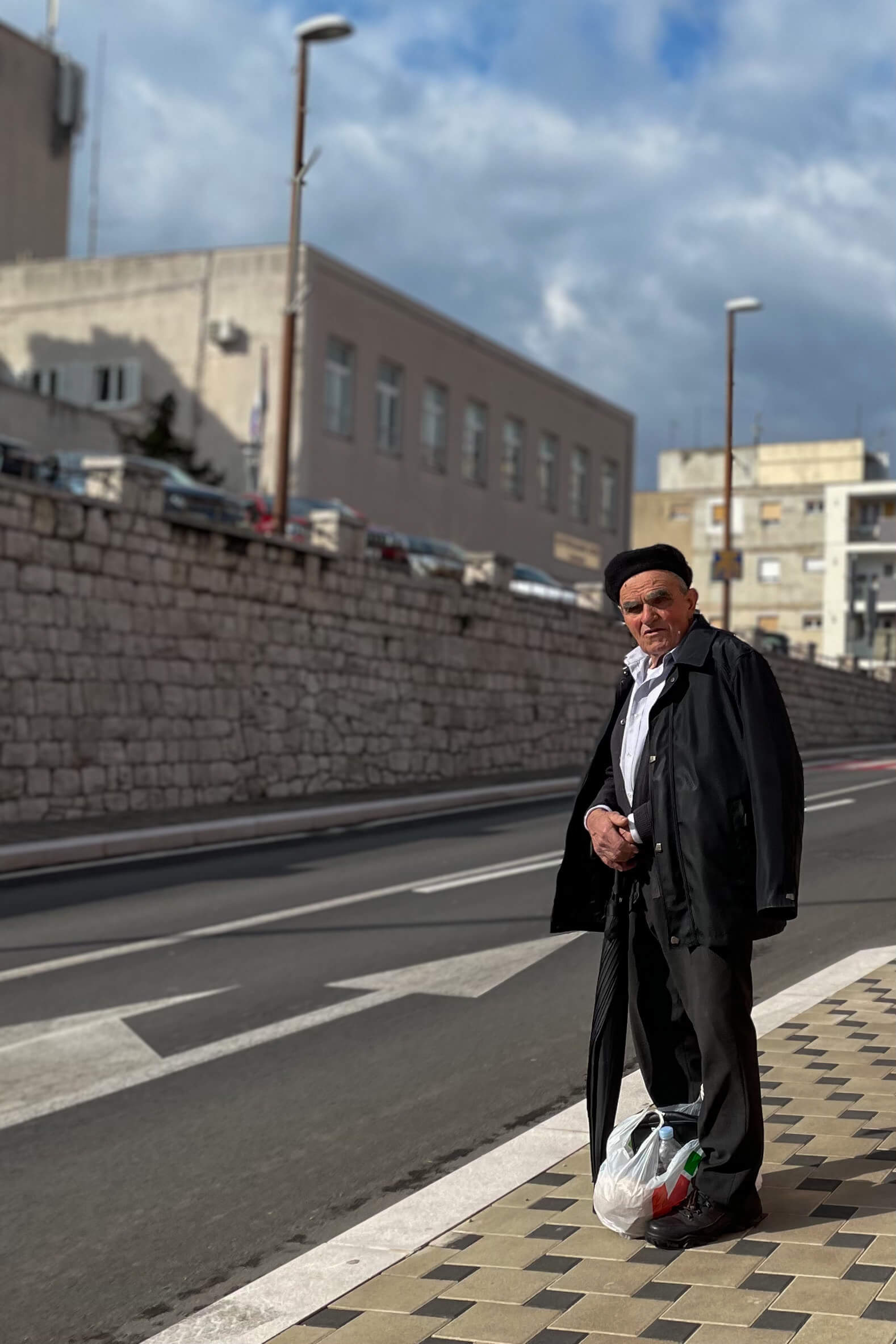
Are you studying, or did you study photography?
I am not studying photography, but I plan to go to Zagreb for a photography course this fall, so I will see what opportunities will open up for me after that.
When did you first realize that photography was your passion?
I think I became aware of that in high school because that’s when I got a little Lumix camera from an old photographer. Exploring all the buttons and settings made me happy and I learned something new every day. I was constantly annoying my friends by taking their pictures, but I have to thank them for putting up with all my ideas and supporting me in the beginning.
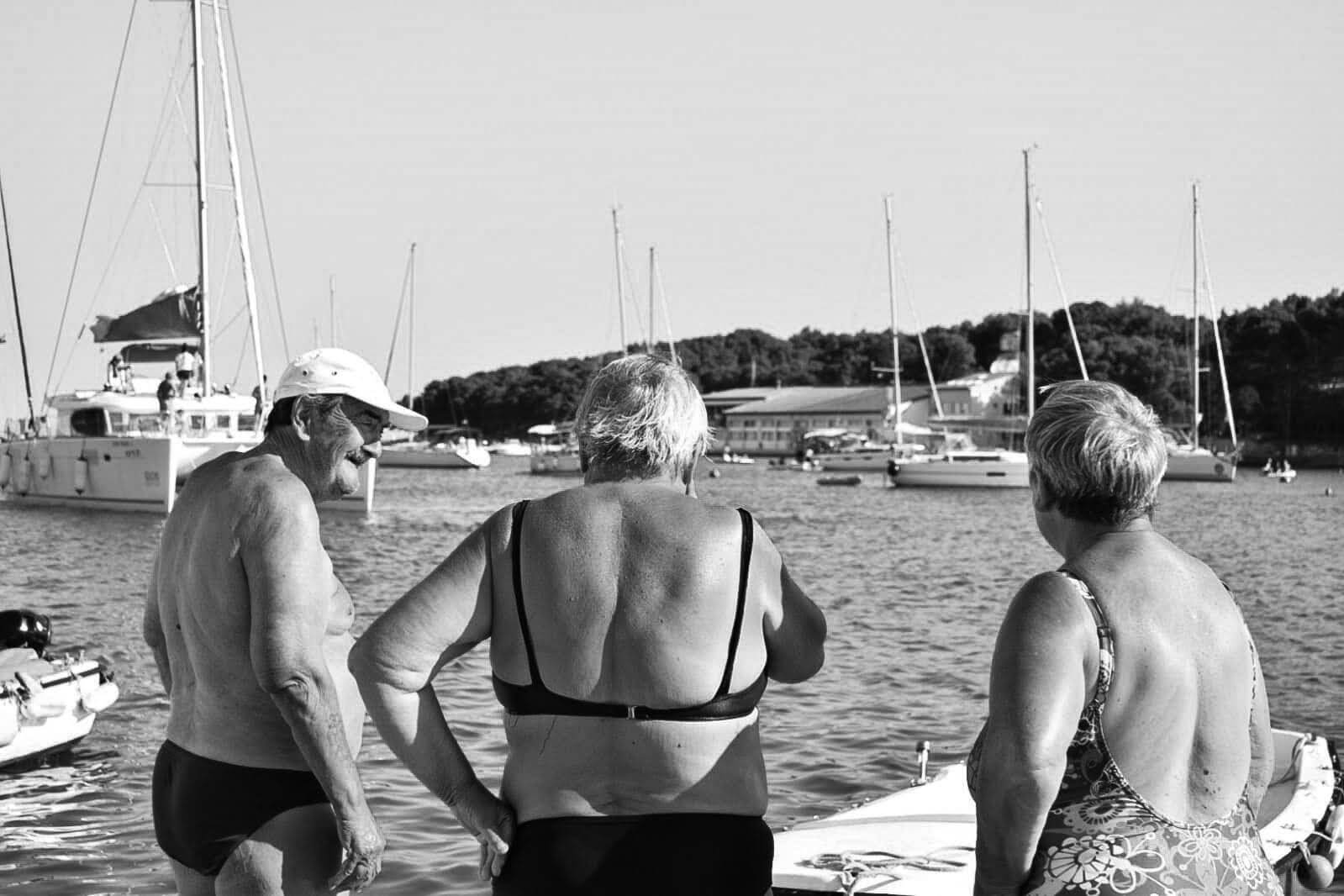
It is well said that photographers are artists just like a painter, an actor, or a composer. But why did you choose photography? How does it help you express what you see and feel?
Art is something that makes us alive. For me, any expression of thoughts and feelings is art. As a child, I loved to look at photos and ask my parents to tell me what happened and what they talked about on the day it was taken. The background story of the photo is still my main concern/topic while talking about photography.

How would you describe your photos? What are you trying to tell the world through them?
My first solo exhibition was called ”Notice”. I could even say that this title is my motto in photography. I want to show people what they miss while staring at cell phones or walk with their heads down. I want to convey the emotion of people who know how to be both happy and sad but are equally beautiful. Every person has a different smile, wrinkles, worries... Every person tells their story, although I don't know the life stories of all these people, I like to imagine myself and I give that freedom to everyone who looks at my photos. You don't have to be a child to be able to fantasize.
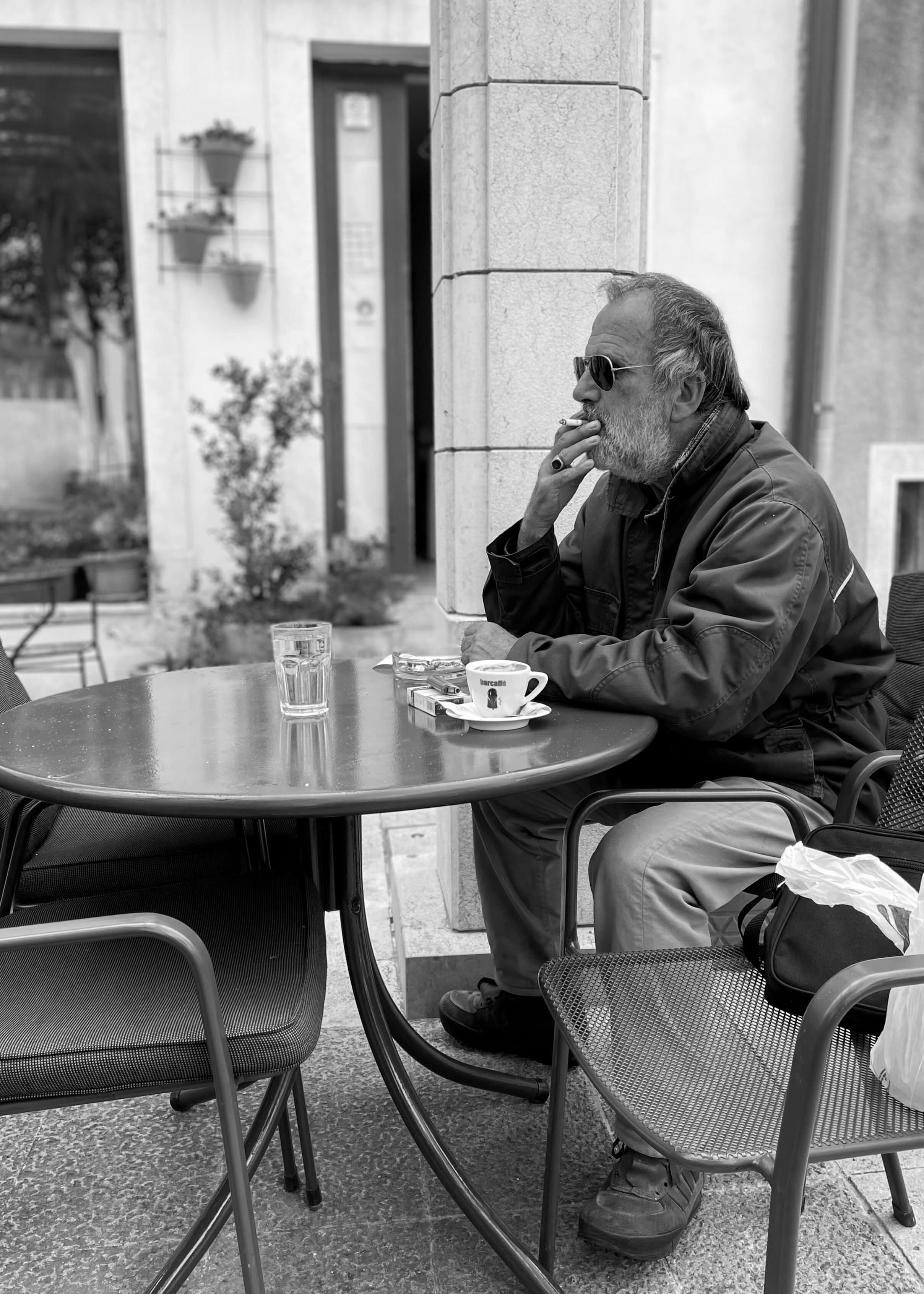
Most photographers that are from, and those who come to Croatia, see it as the ideal place for landscape pictures, sunsets, drone photography… but you seem to be more interested in people. How come?
Croatia is a beautiful country and it sure does get photographed a lot nowadays. I don't mind seeing other people's photos of nature, sunsets, landscapes... but when I find myself in nature I enjoy it as intended, without a camera. Ok, occasionally I capture a sunset or two.
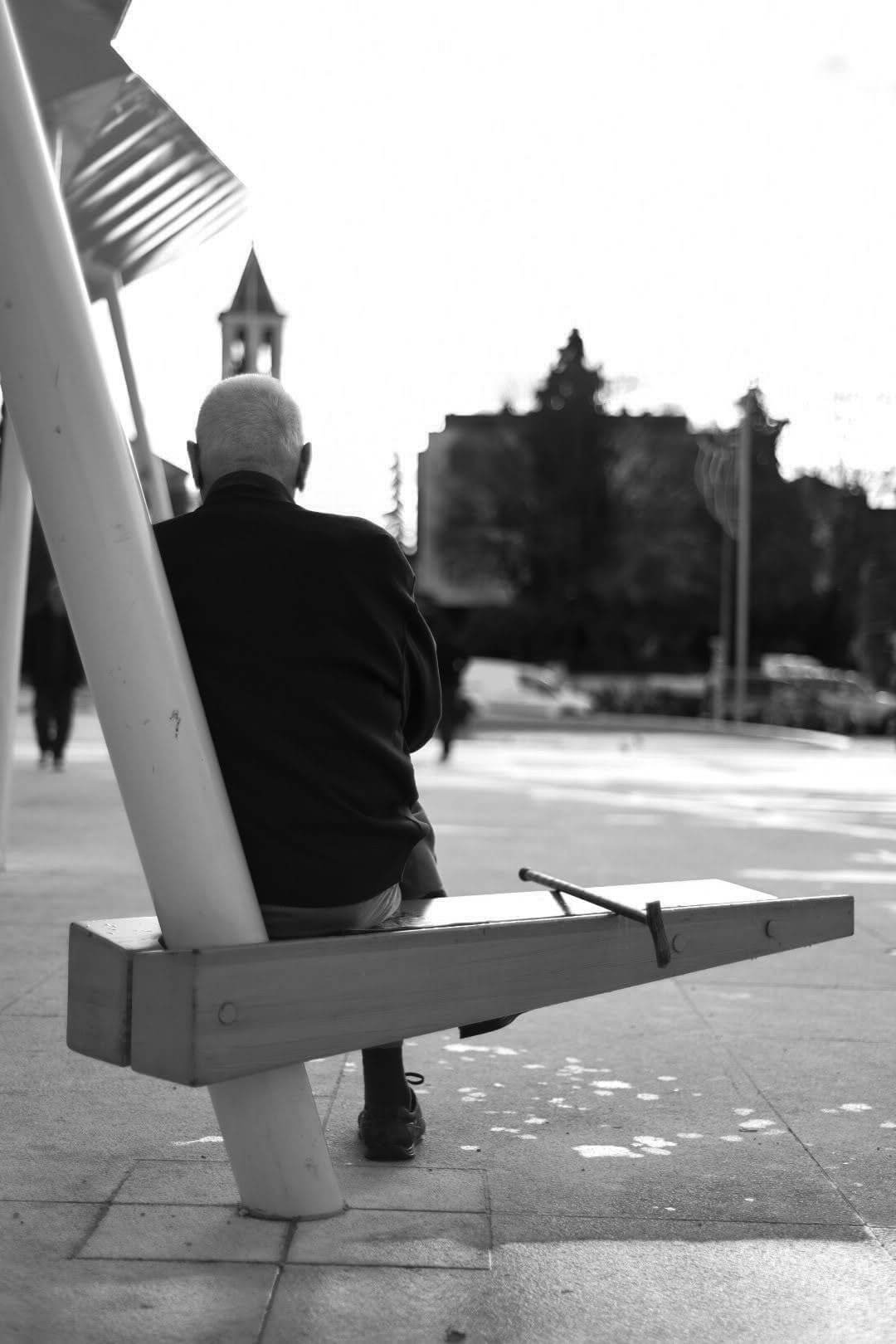
Your pictures are mostly from Šibenik. What makes it different from other Croatian cities?
Šibenik is my small town, full of great and creative people and artists. I know it's every stone and street and I love it's every single corner. I grew up there and I plan to stay there.
''Every person tells their story, although I don't know the life stories of all these people, I like to imagine myself and I give that freedom to everyone who looks at my photos. You don't have to be a child to be able to fantasize''.
- Tonka Lokas
Being a photographer, where do you see yourself in 10 years? Would you like to work as an independent photographer, work for a magazine, agency…?
In 10 years from now? I dream of having a space dedicated to teaching young people and children about photography and doing workshops. I'm afraid that true photography fades slightly due to technology and high-end cameras on mobile phones. It's all great, don't get me wrong, but we take it as given, and I like to see it as something more. That's what I'd like to show to those younger generations; a love of cameras and developed photographs.
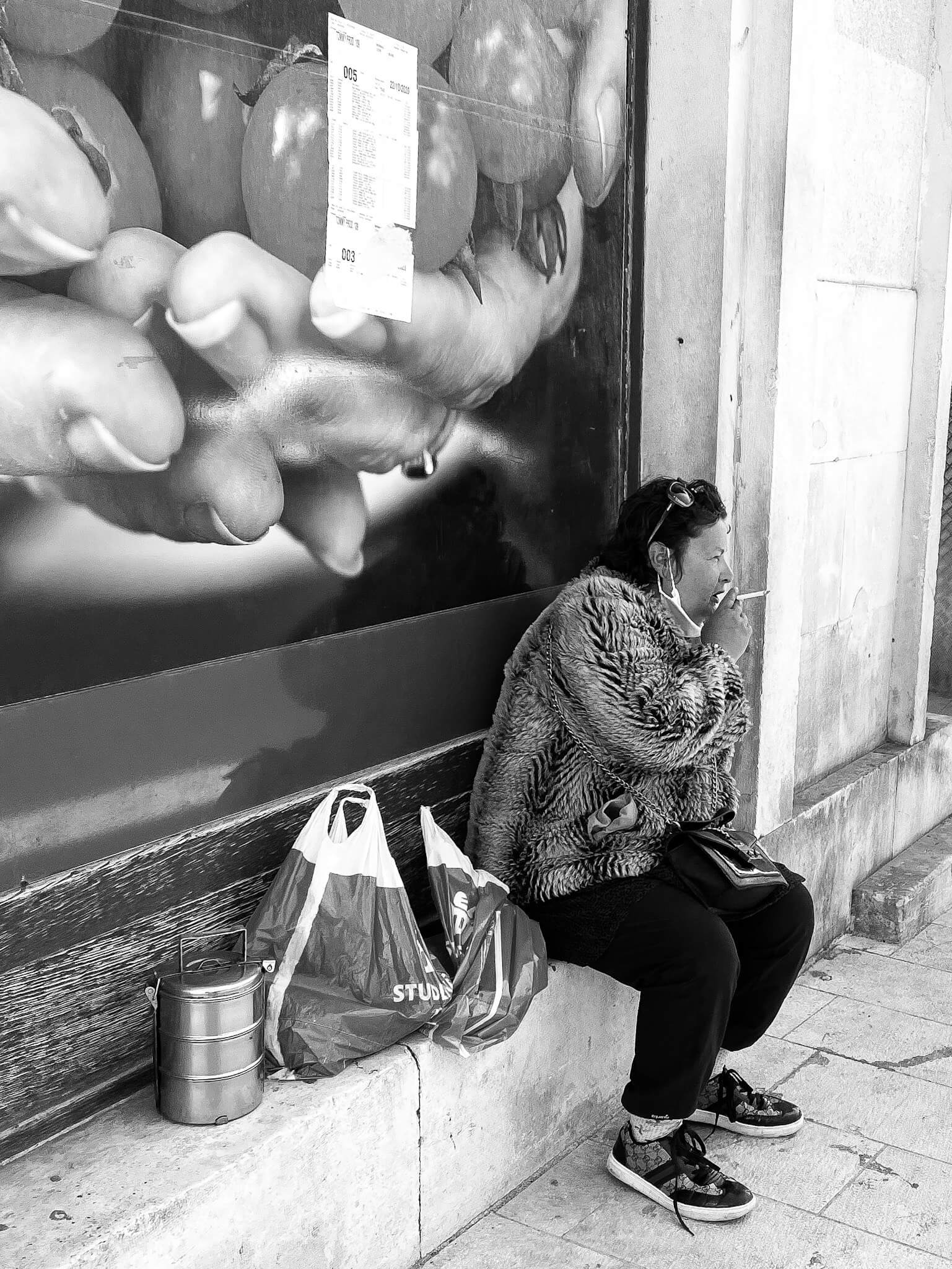
Nowadays, we see that most pictures shared through social media stand out for their bright and saturated colors. Why are you choosing the black and white format?
For me, black and white photography has a soul. And it all revolves around the imagination and emotion I want to convey. Talking about street photography, where everything is full of colors, we can say it's difficult for photo viewers to dig the emotion I experienced taking that photo. People are easily attracted to color, and maybe I’m just in love with a colorless world where we’re all equal.

How is a day in your life? Do you prepare yourself exclusively to take photos when going out? Or do you wear your camera as an accessory and it happens spontaneously?
I always carry a camera on my shoulder. I stop in one place, look around and catch spontaneity in people. We are most honest when we do not know that someone is taking our picture.
Who are your main photography references?
I strongly rely on a feeling while taking photos, so I can't say I look up to anyone in particular. But some of my favorite photographers are Bruce Gilden, Lee Friedlander, and Diana Arbus.
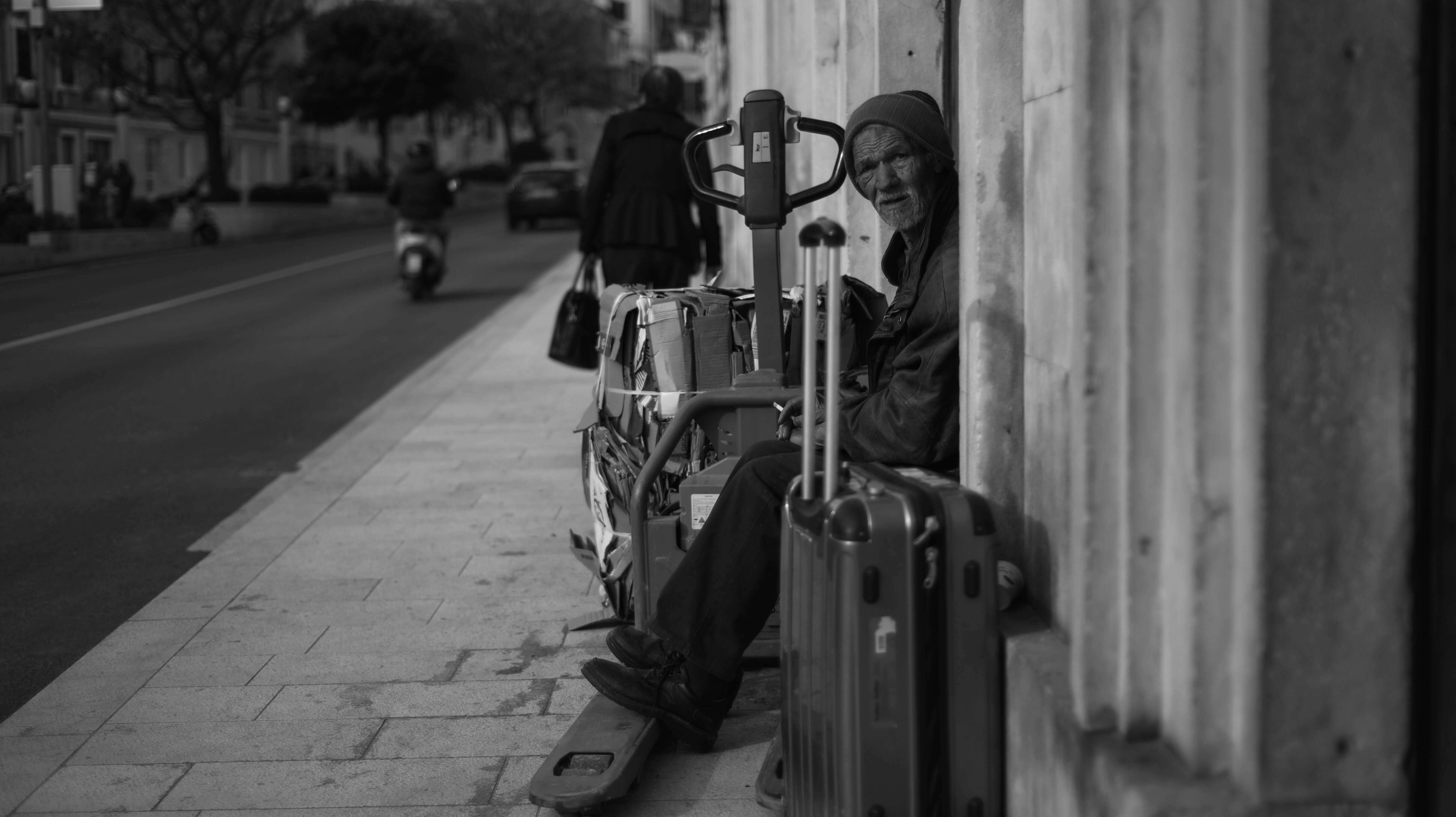
What are your short-term plans as a Croatian photographer? Are you currently working on a project? Are you planning on traveling?
My next plan is to realize an exhibition that I have been thinking of for quite some time. And of course, to learn, work and thrive in the photographic world. I love to travel, but because of the Covid situation, we all have to be a little more patient.
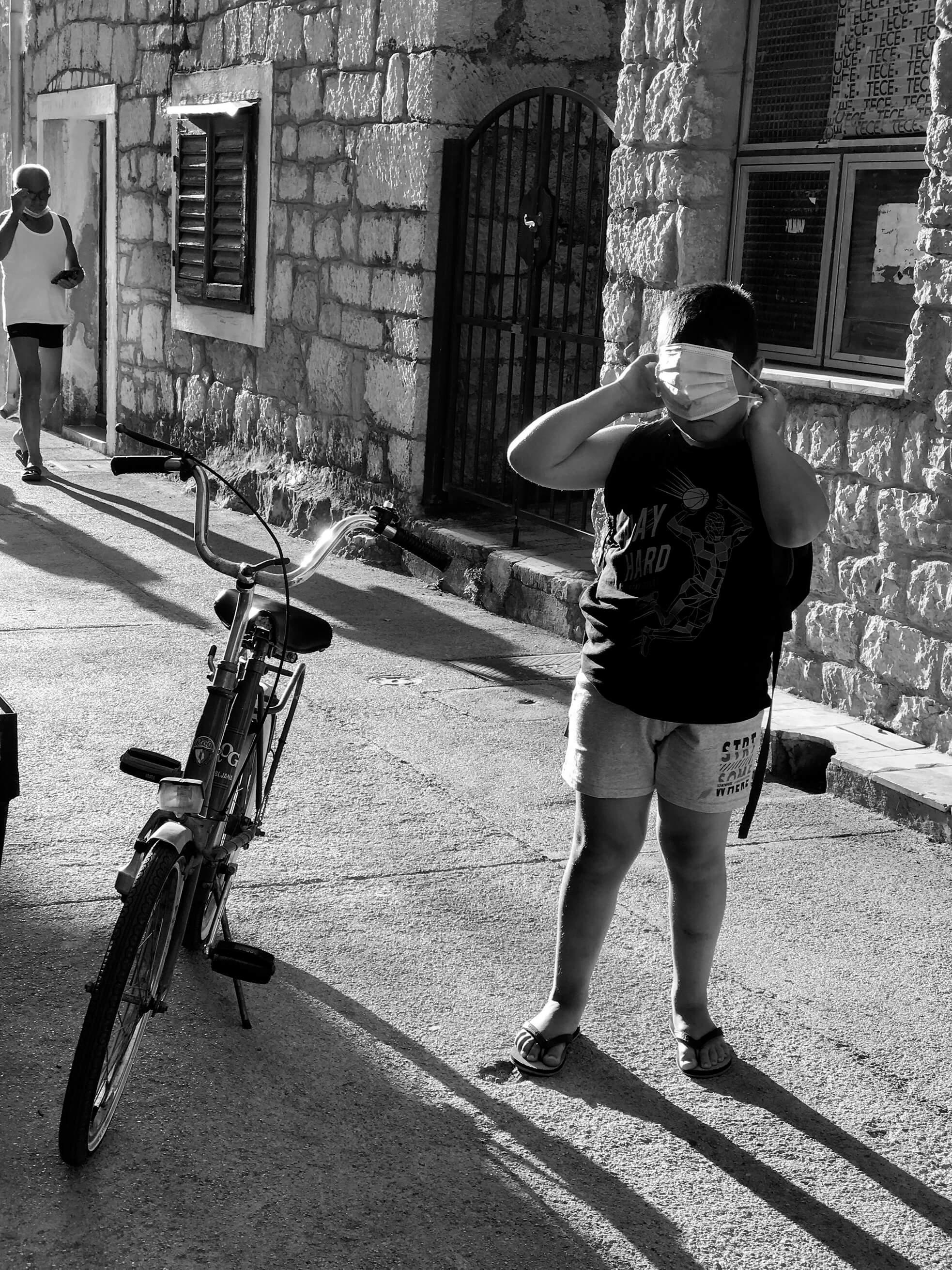
Besides photography, how would you describe your life in Croatia? What else do you like to do?
Life in Croatia is beautiful and relaxed. As young people, we have a lot of options to travel. My boyfriend and I travel a lot. Lately, it's mostly around Croatia, let's say once a month. Our goal is to visit as many islands as possible and of course the entire Dalmatian coast. We are Dalmatians and winter is not very dear to us, so we haven't started touring eastern Croatia yet.
I work as an emergency ambulance nurse and I love my job very much. As hard as the job is, at the end of the day it’s nice to know you’ve helped someone!
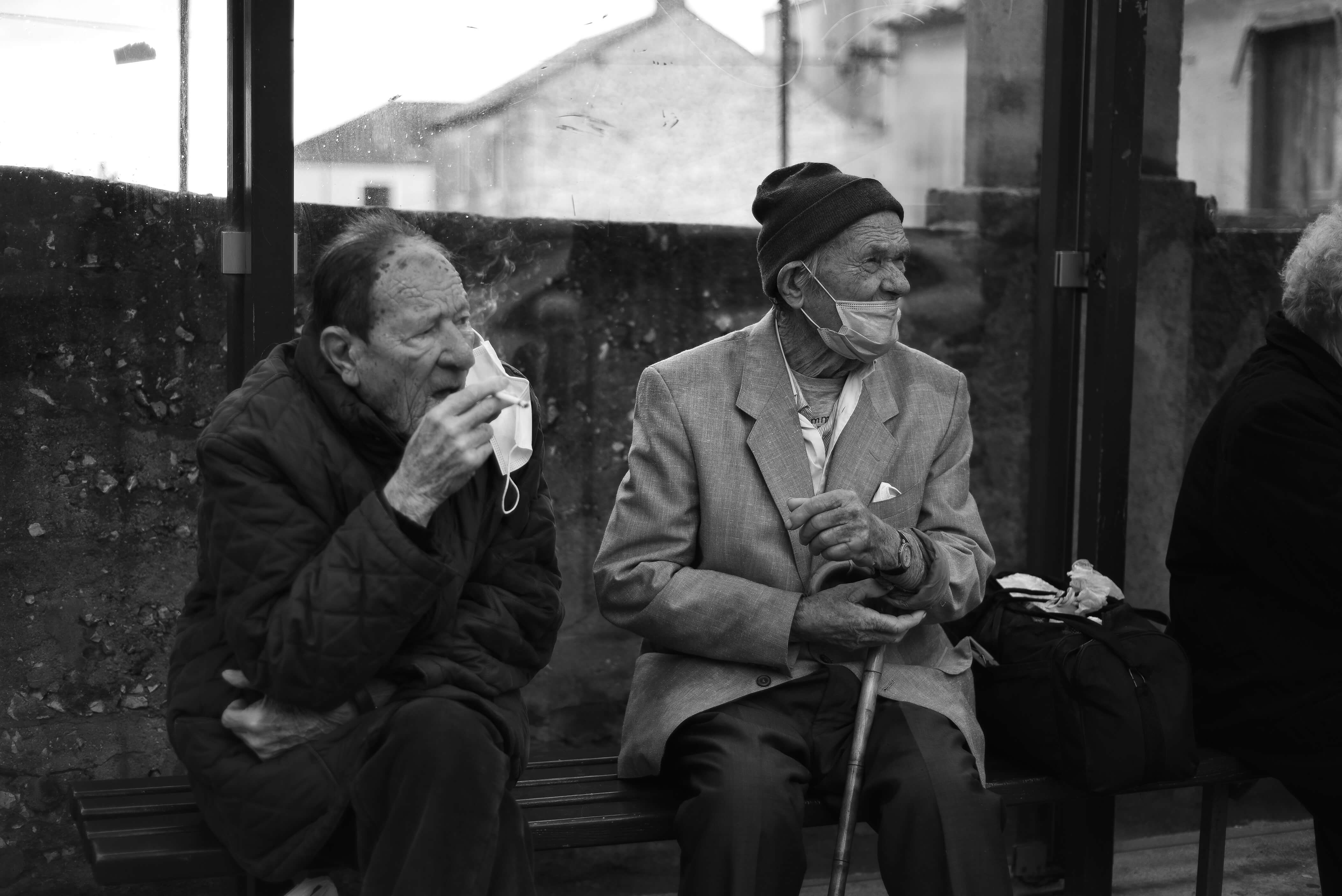
I believe that photographers like Tonka Lokas are living proof that documentary photography or street photography can still tell us thousands of stories every day in a city. I could not count the times that I have made excuses to believe that it is impossible: I do not have the camera I need, I should buy more lenses, due to the pandemic I do not know what photos I could take, maybe this city is not interesting enough... but the Images of this young photographer from Sibenik revive an inspiring phrase that I often hear from time to time: ''If you want to be a better photographer, stand in front of more interesting stuff''. Sometimes that's all it takes: paying attention.
If you want to see and learn more about Tonka’s amazing photography work and upcoming projects, you can do so by following her on her Instagram account.
You can learn more about what Šibenik can offer you on your next trip in Total Croatia’s Šibenik on a page, HERE. Total Croatia’s articles are now available in your language!
For more on art and culture in Croatia, follow TCN's dedicated lifestyle page.
Unique and UNESCO: The Fascinating and Futuristic Fortresses of Šibenik
May 12, 2021 – Using vivid modern techniques like 3D mapping and augmented reality, each of the Fortresses of Šibenik is unique. Here, we take a closer look at these fascinating, must-visit venues.
The city of Šibenik is surrounded by some of the most distinctive waters in Dalmatia. To the city's northeast, the great Krka river drops over gushing waterfalls, meeting Cikola river in the epic Krka National Park. Thereafter, it flows first into Lake Prokljan, then the bay of Šibenik. Around the water's edge in Šibenik, people enjoying in bars and restaurants. Or, in warmer months, sunbathing and swimming in the sea. The Channel of St. Ante, with the City of Šibenik in the background and St. Nikola's Fortress in the foreground @ TZ Šibenik.
The Channel of St. Ante, with the City of Šibenik in the background and St. Nikola's Fortress in the foreground @ TZ Šibenik.
And yet, these special waters are not the only thing that makes Šibenik unique. There's much more to this city than just the sea. Not least, the unique Fortresses of Šibenik.
Actually, it's not that unusual to find a fortress, castle or fortifications in Croatian cities. After all, for several hundred years, this was the frontline of European defense against the invading Ottoman empire. However, Šibenik is unique within the entire Balkan region to have not one, but four fortresses from that era. Not only are they very well preserved, but also they have been completely renovated and thoroughly modernized.
Surprising multimedia and fascinating digital content now combine with fantastic views and unique architecture to draw visitors to the Fortresses of Šibenik. Subsequently, the four Fortresses of Šibenik now make up an unmissable part of any visit to the city.
Fortresses of Šibenik: St. Michael's Fortress
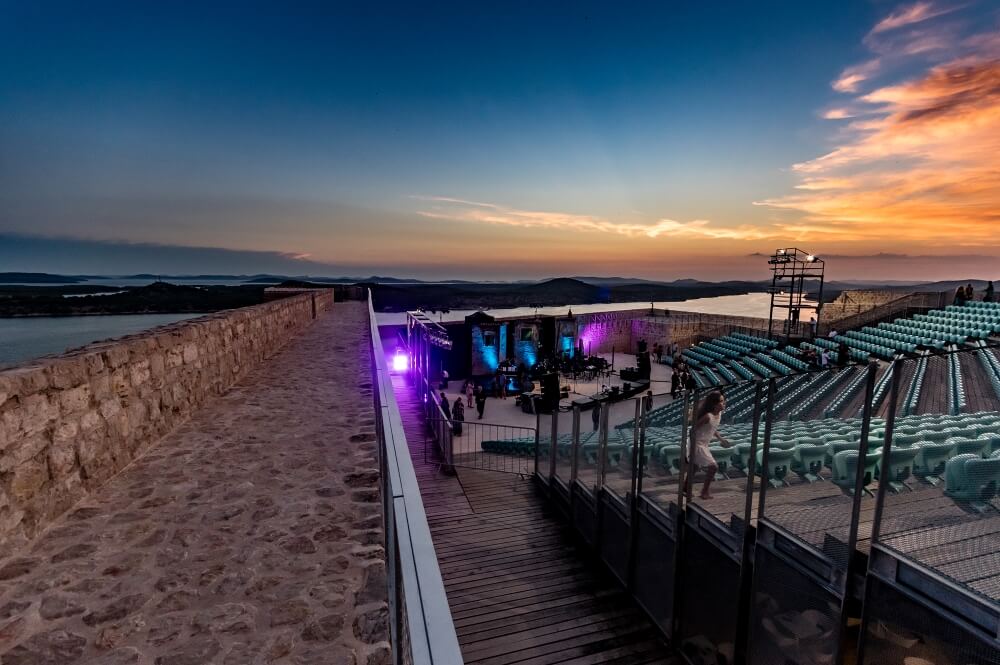 Fortresses of Šibenik: St. Michael's Fortress @ TZ Šibenik.
Fortresses of Šibenik: St. Michael's Fortress @ TZ Šibenik.
The oldest of the four fortresses of Šibenik, iconic St. Michael's is today known as one of the most prestigious open-air concert stages on this side of the Adriatic. But, it also a place where you can learn fascinating history via spectacular modern technology. Deep within the fortress, 3D mapping techniques make 15th-century water tanks spring to life. This vivid display will transport you through centuries of exciting Šibenik history, including the story of St. Michael and the dragon.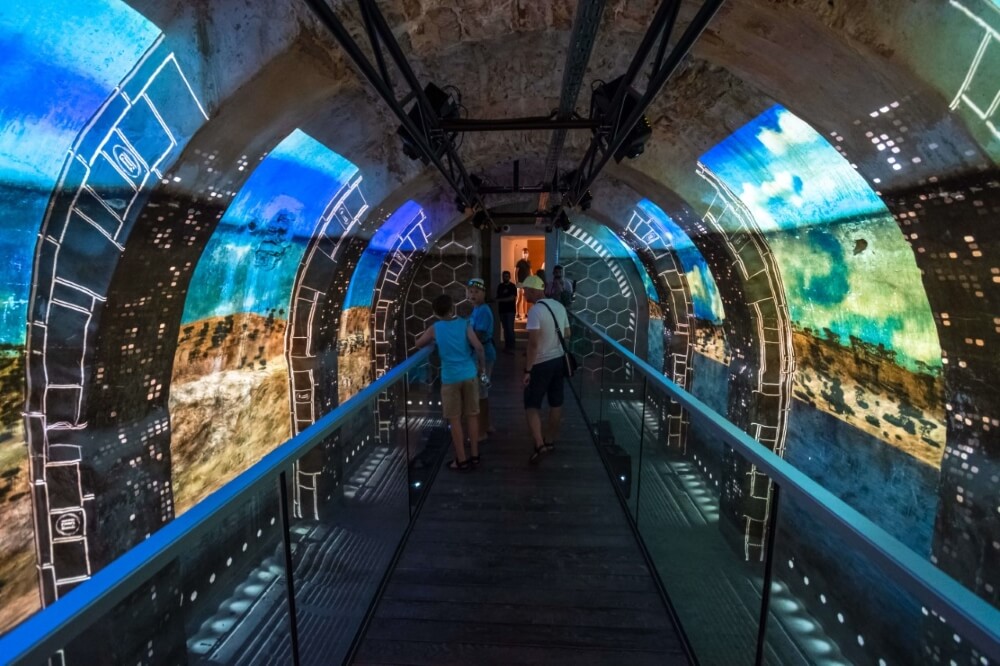 Vivid multimedia trails through the Fortresses of Šibenik @ TZ Šibenik.
Vivid multimedia trails through the Fortresses of Šibenik @ TZ Šibenik.
Fortresses of Šibenik: Barone Fortress
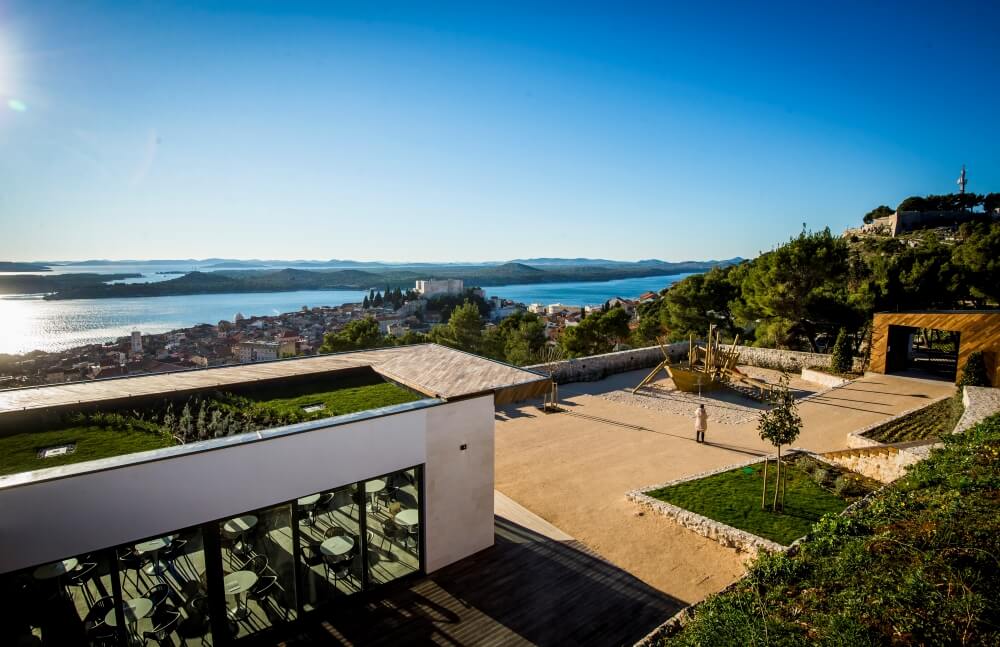 Barone Fortress @ TZ Šibenik.
Barone Fortress @ TZ Šibenik.
The latest of the four Fortresses of Šibenik to be renovated, in Barone Fortress you get a whole new dimension of reality. Actually, Barone Fortress successfully repelled the fiercest attacks of the Ottomans in the 17th century and therefore changed the course of history in this area. Via augmented reality (AR), you can relive the sights and sounds of these key moments in European history. After the thrill of experiencing the battles, you'd be well advised to take a breather on the Barone Bar’s terrace. There, you can enjoy views of the entire city, while any younger visitors can have fun on the children’s playground. Vivid multimedia trails through the Fortresses of Šibenik @ TZ Šibenik.
Vivid multimedia trails through the Fortresses of Šibenik @ TZ Šibenik.
Fortresses of Šibenik: St. Nikola's Fortress
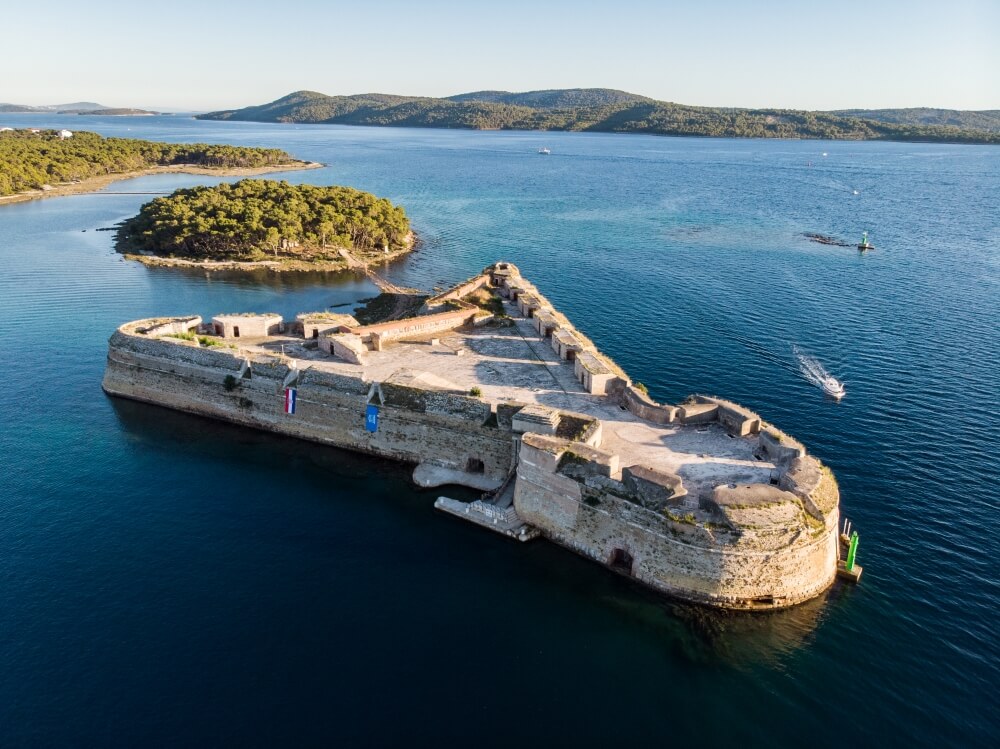 Fortresses of Šibenik: The UNESCO-protected St. Nikola's Fortress @ TZ Šibenik.
Fortresses of Šibenik: The UNESCO-protected St. Nikola's Fortress @ TZ Šibenik.
Within the Fortresses of Šibenik, St. Nicholas is unique. Not only is it the only one that sits on its own island within the sea, but also is a unique Renaissance-style Venetian fortification. As such, it is protected as a UNESCO monument of world architectural heritage.
The fortress was built on the island of Ljuljevac, in the Channel of St. Ante, where the waters of Šibenik bay meet the Adriatic. Owing to its protected status, the best way to access the fortress is on an official tour. Lasting around two hours, the tour takes you from Šibenik down the channel by boat. After arriving at the fortress, you're guided rounded the structure on a tour detailing the architectural highlights and history.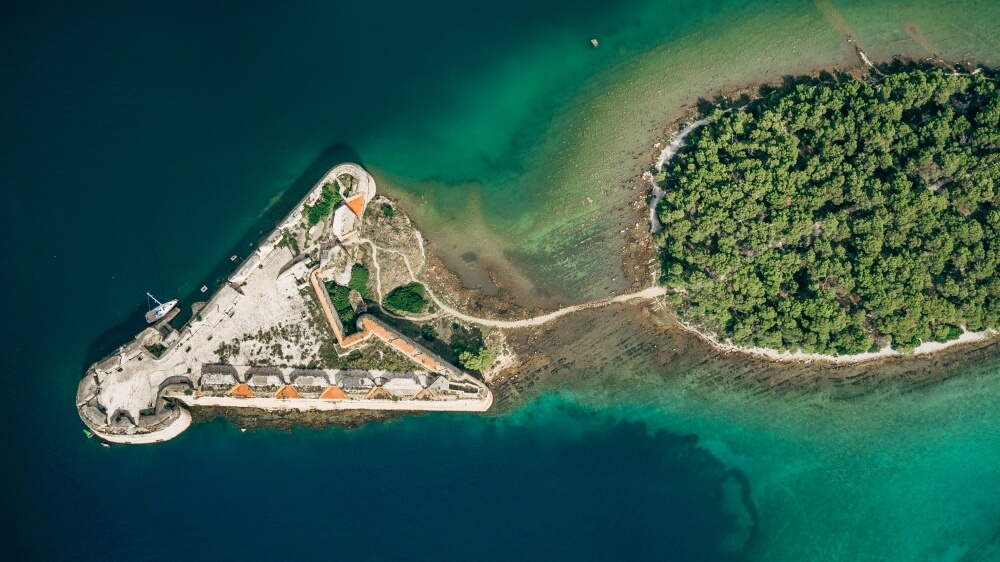 Fortresses of Šibenik: The UNESCO-protected St. Nikola's Fortress @ TZ Šibenik.
Fortresses of Šibenik: The UNESCO-protected St. Nikola's Fortress @ TZ Šibenik.
Fortresses of Šibenik: St. John's Fortress
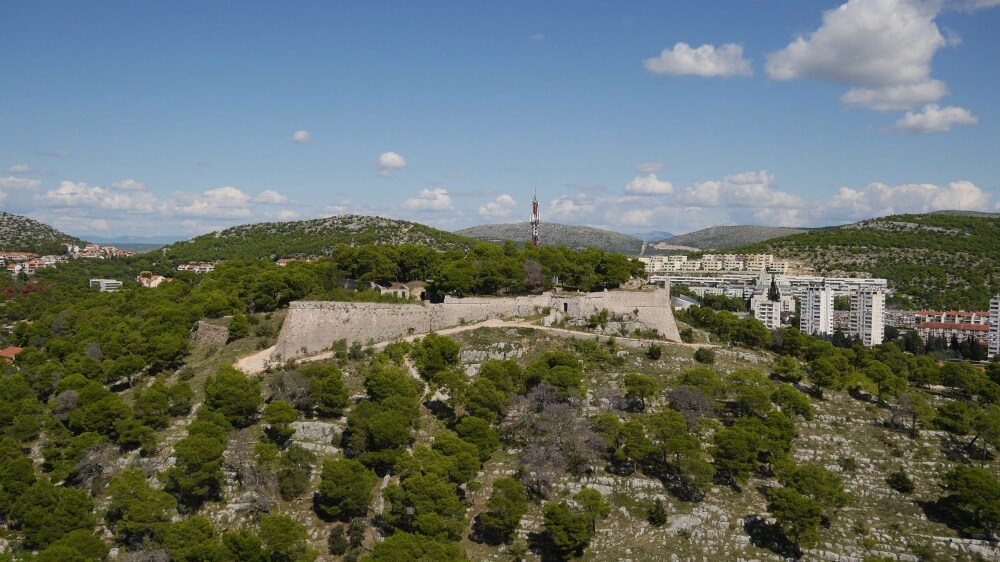 St. John's Fortress @ TZ Šibenik.
St. John's Fortress @ TZ Šibenik.
The medieval church of St. John the Baptist that once stood on a hill, north of Šibenik's historical centre, dates to at least 1444. It is around this church that St. John's Fortress rose up. Naturally, it's also where the name comes from. In early 1646, when it was speedily built, alongside its peers, it helped save the city from the Ottomans. Later, it continued to be used by resident armies all the way up until the times of Yugoslavia. Today, St. John's is the last of the Fortresses of Šibenik to be undergoing reconstruction. Its completion is imminent and its official reopening is planned for September 2021.
Three of the Fortresses of Šibenik are included in the pan-European Fortresses of FORTITUDE project, which links significant sites in Croatia to some in Montenegro and Bosnia. If you want to know more about that project - and learn a little more about the history of some Šibenik fortresses, then look here.
Šibenik Open-Air Library, Dedicated to the Great Writer Vesna Parun
May 3, 2021 - The Šibenik open-air library will be the third small open-air library in the city. This library, the work of Mario Juras, known as Lulas, will be officially presented on Friday, April 30, starting at 10 am, at the Nursery in Vidice, Šibenik.
Šibenski.hr reports, this time Radio Šibenik, with the support of the City of Šibenik and the Cultural Association Fotopoetika, is giving it away to all its fellow citizens and visitors to Krešimir's city.
"I'm lying in bed waiting for the rhythm, for the music to take me. As in a dream, I am rich in emerald bays, pines, capes, caves, stalagmites", said the great Vesna Parun in an interview in 2014 (My World).
Šibenik County Radio is dedicating the open-air library, 'Salto Mortale' to Vesna Parun, for which the foundations were laid this Tuesday, April 27, in the afternoon.
"As Šibenik is a city that is a friend of children, a city of young people, it is a city of culture from the city center to other parts of the city. This time we went to the Rasadnik, which until recently was a neglected park, and now is an example of successful cooperation of the city administration with the representatives of the neighborhood and we are turning it into an urban living room. And I hope that this is just one in a series of activities to spread culture", said Deputy Mayor Rakić.
The 'Salto Mortale' library is the third of its kind in Šibenik, and this one has found its place under the canopy of tall pine trees in Rasadnik - a place rich in content for the quality pastime of fellow citizens of all ages, from the youngest to the oldest.
"With this project, as Salto Mortale is primarily a project that will last two months, and will bring a handful of beautiful things to the people of Šibenik in places they would never think of, we want to enrich our city with exactly the content that our fellow citizens love. The location was not chosen by chance either. Namely, Rasadnik is a gathering place for many people from Šibenik, small and large, and is located on the way to the future student center Palacin. We wanted to complete the story and add a cultural, literary note to the place", said longtime editor Živana Podrug.
The name of Vesna Parun was not taken by chance either. The library is named after her collection of poems published in 1981 to mark the centenary of the great poet's birth on April 10, 2022. Also, Radio Šibenik and partners with this project join the celebration of 2021 as the Year of Reading by the decision of the Ministry of Culture and Reading.
For more about lifestyle in Croatia, follow TCN's dedicated page.
A Modern New Museum Will be Dedicated to the Šibenik Cathedral
Earlier this summer, the city of Šibenik was granted EU funds for two major projects - the reconstruction of the fortress Sv. Ivana and the revitalization of Galbiani palace in the city center. The project of the Galbiani palace will include, in addition to a complete renovation of the facade and interesting additions to the interior, a museum dedicated to Šibenik's Cathedral of St. James.


